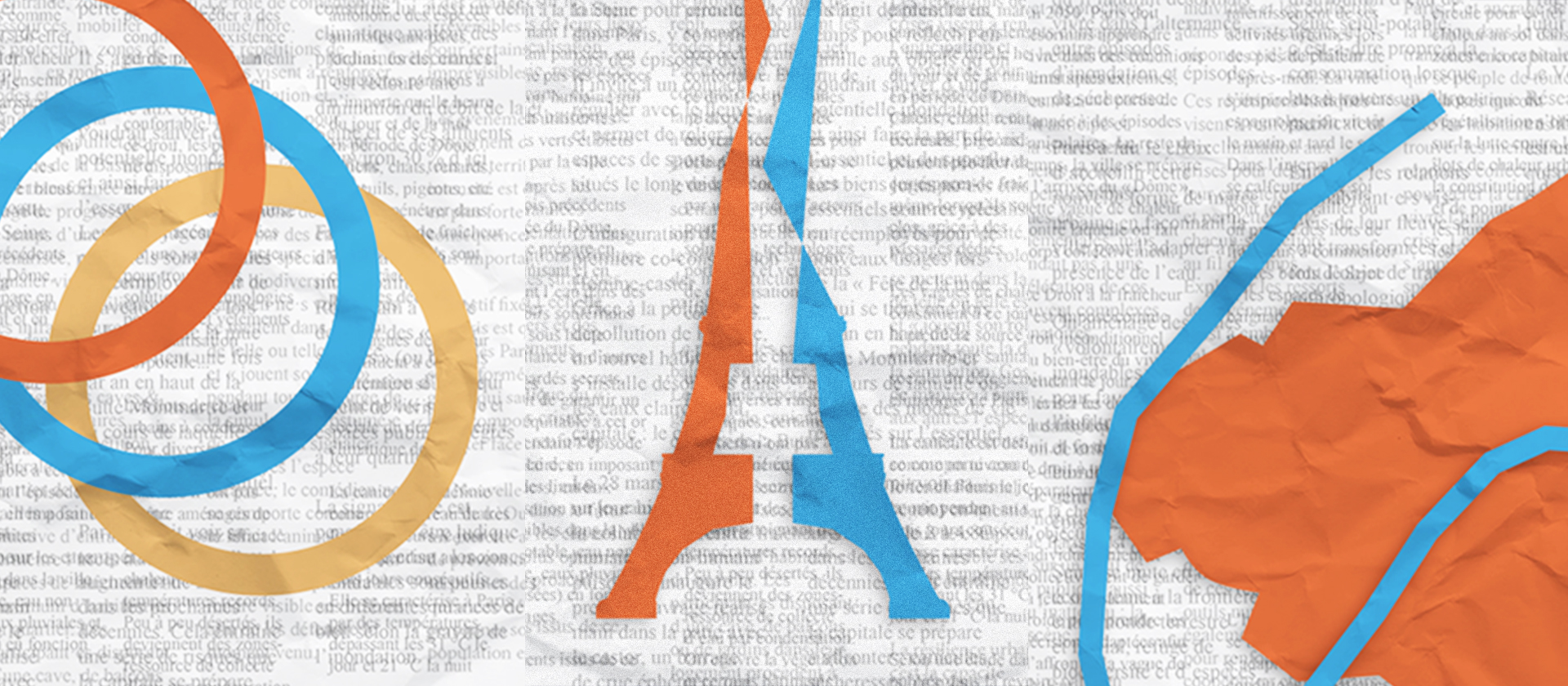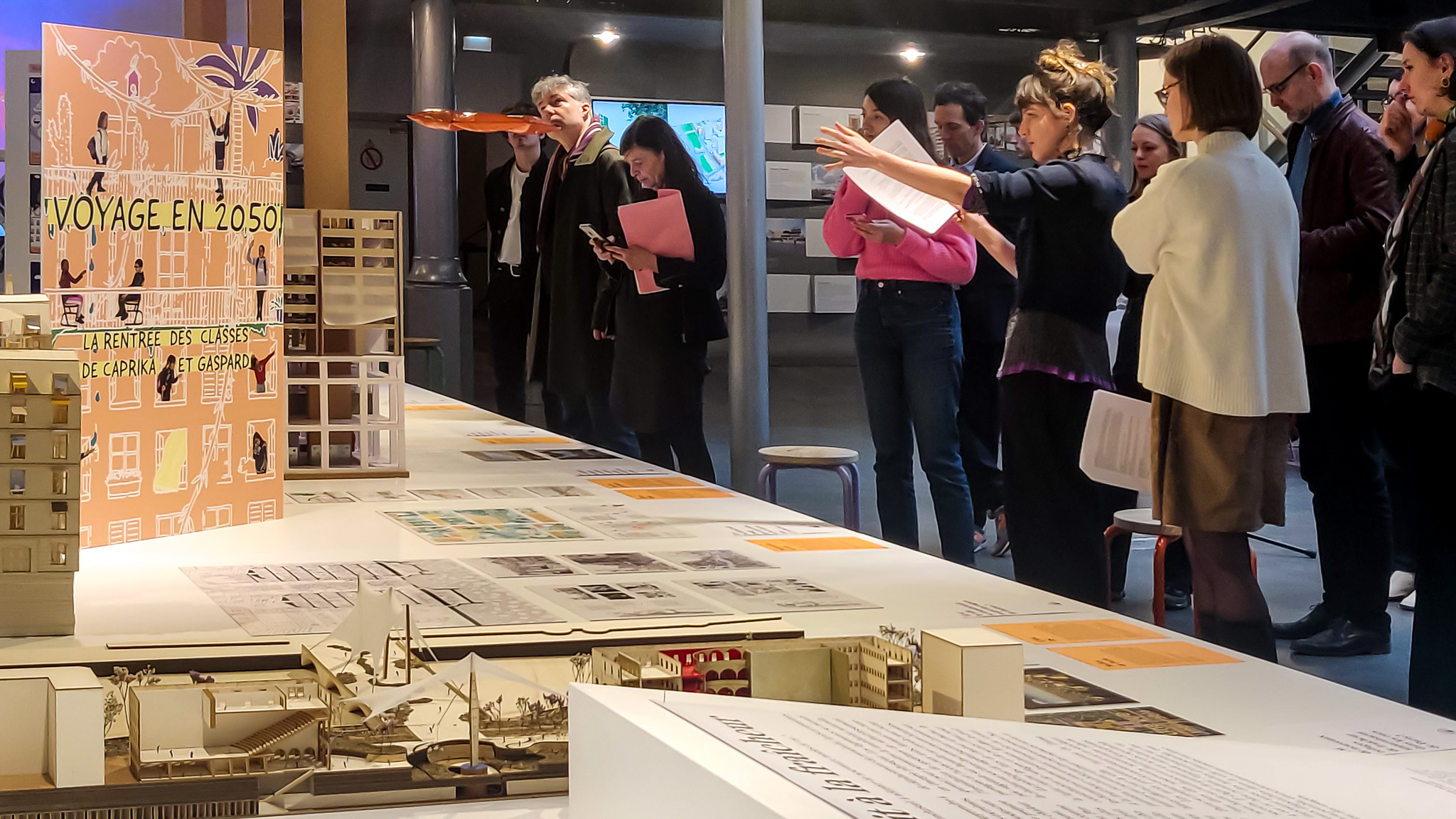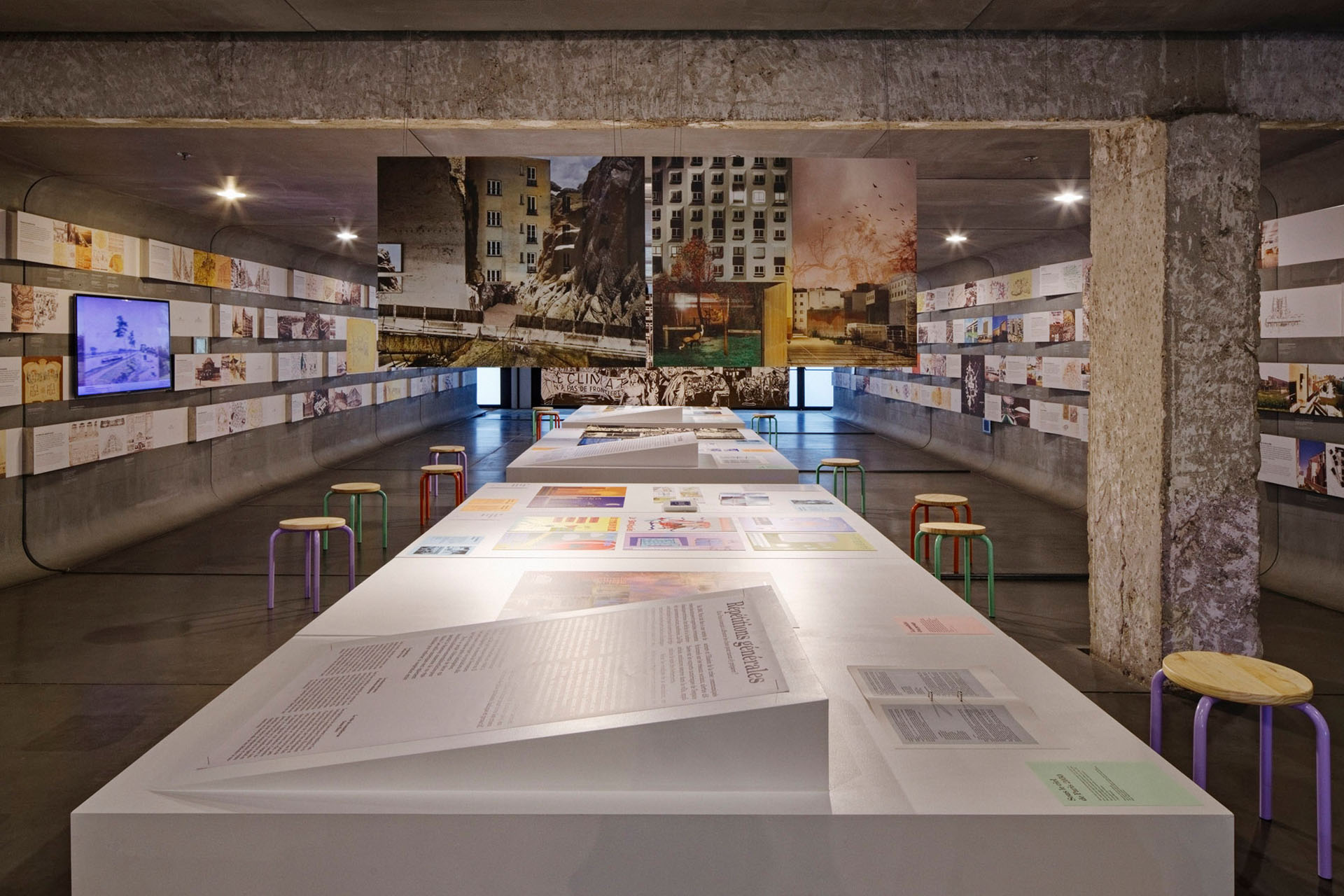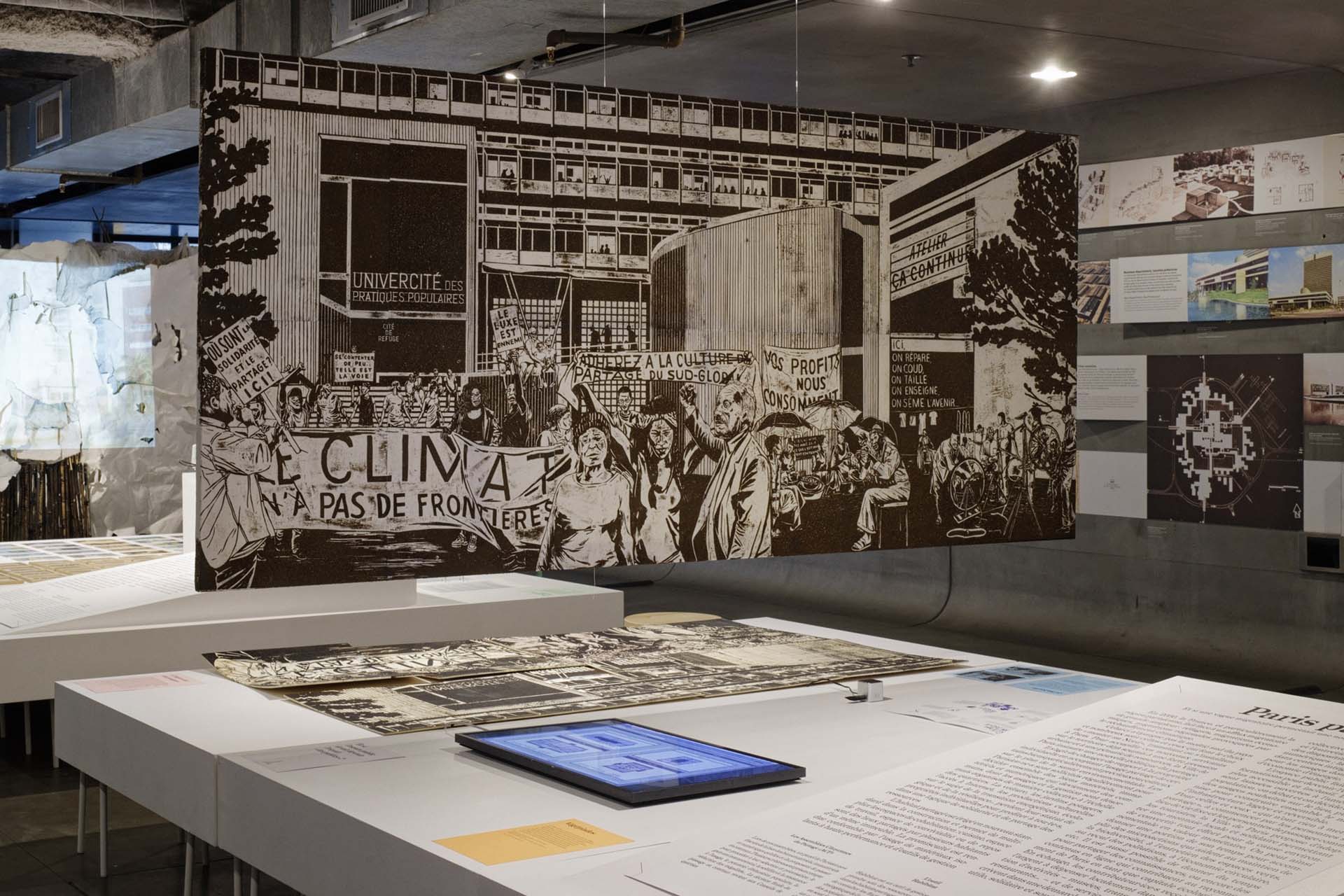
Towards Paris 2050
Designing a set of iterative fictions imagining resilient futures for Paris in 2050
The initiative “Towards Paris 2050: Facing the Challenges of Our Century Together”, led by the City of Paris and the Paris Council for Architecture, Urbanism, and the Environment (CAUE), invited a wide range of contributors to imagine and represent daily life in Paris in 2050.
Students, citizens, architects, artists, as well as primary and secondary school pupils from Paris, expressed and materialised their visions for the future of the capital, based on four inspirational texts created by our studio. These fictions helped to set the scene for various possible futures in Paris in 2050, depending on the impact of potential crises in the coming decades and the different public policies implemented to tackle them.
- General Rehearsals explores how Paris becomes a stage for playful rehearsals to anticipate and navigate crises, helping individuals and collectives to develop response and adaptation strategies.
- The Right to Coolness addresses how the city collectively works to protect both human and non-human life during the annual heatwaves.
- Shared Paris imagines how a migration wave caused by climate change leads to a new logic of sharing the city and its resources.
- Fluctuat Nec Mergitur describes how a once-in-a-century flood of the Seine prompts a transformation in the lifestyles of Parisians and renews their relationship with water.
Each fiction served as a foundation upon which the stakeholders involved in the initiative could build their own stories and imaginations. For those keen to explore further, each initial narrative was contextualised with a selection of emerging trends and weak signals, shedding light on the fragments of the present that inspired these visions of the future.
This work was showcased in an exhibition at the Pavillon de l’Arsenal, open to the general public, and included discussions with experts between February and March 2024.

↑ The exhibition at the Pavillon de l’Arsenal presented to the public the visions imagined by the contributors of the Towards Paris 2050 initiative.
[Credits : Conseil d’Architecture, d’Urbanisme et de l’Environnement de Paris]

The Parisian territory has become a giant stage for ‘crisis rehearsals’ to help everyone learn and practice the actions to take during crises. On a regular basis, large-scale disasters are simulated across the city: Seine floods, droughts, heatwaves, fires, floods, storms, cyberattacks… all while supporting individuals and groups in their response and adaptation strategies.
These playful rehearsals aim to strengthen crisis acclimatisation by defusing their anxiety-inducing nature, allowing everyone to improve over time. Using event-based strategies also helps to engage residents so that everyone can participate in the process of anticipation.
Paris is filled with set pieces that blur the line between reality and fiction to ensure the immersive quality of these rehearsals. Digital tools are also used to enhance cooperation between participants and to heighten the illusion of the crisis: fictional announcements on social media, alerts broadcast on urban digital displays, soundscapes throughout the city, and apps to track events.
[…]
The playful crisis signage
This new signage (panels, markings, maps) takes root in the streets of Paris and in digital platforms to signal changes in the territory during crisis simulations: mutual aid networks, resource zones, protective structures, refuge areas… all employing the codes and mechanisms of games.
For instance, the July Column at Place de la Bastille was transformed into a progress gauge during a scripted crisis, visually indicating the resilience level of Parisian infrastructure.


The Right to Coolness has established an unconditional right to the well-being of all living beings, humans, but also plants and animals. During the day, the aim of this right is to prevent the deaths of the most vulnerable. At night, it goes hand in hand with the right to restorative sleep, which is jeopardised by the nocturnal heat. The objective: to ensure, both individually and collectively, that we keep a cool enough head to make the right decisions in order to face the heatwave.
This has led to transformations in infrastructure and lifestyles to enable everyone to enjoy this right.
[…]
The greening policy focuses on combating urban heat islands, creating refuges and water points for both humans and animals. Indeed, since the Right to Coolness applies to all living beings in Paris, non-human species are not forgotten, and can make use of the green and blue spaces provided by the city.
In the months leading up to the arrival of the Dome, Paris prepares by conserving and storing water in underground reservoirs, which are placed under strict surveillance, along with other secret locations. The goal is to guarantee fair access to this ‘blue gold’ during the heatwave, while imposing limits on the use of the city’s available water supplies (drinking water, non-potable water, rainwater, and wastewater), depending on the needs.


[Credits : Conseil d’Architecture, d’Urbanisme et de l’Environnement de Paris]

In 2050, France, and particularly the Paris region, is facing a large-scale influx of migrants: refugees, economic migrants, and regional migrations caused by climate change.
The southern half of the country has not been spared, and many people have chosen to ‘move north’, either passing through or settling in Paris. To accommodate these new arrivals in a territory already under significant urban pressure and facing a resource shortage, the City of Paris has implemented a new policy of sharing.
[…]
For those ‘who have nothing to share’, starting with people without a fixed place to live and transient populations such as tourists, the City of Paris proposes adopting a local and solidarity-based currency that allows any effort made for the environmental cause to be converted into monetary value.
[…]
The Kapitale cryptocurrency
This cryptocurrency, introduced by a private entity, competes with the local and solidarity-based currency of the City of Paris. Based on the same principle of rewarding eco-friendly behaviours with monetary value, Kapitale targets residents who are more tech-savvy, replicating a form of privilege for those already able to adopt more environmentally conscious lifestyles. The extensive network of sensors across Paris, coupled with real-time monitoring by artificial intelligence, also raises concerns about constant surveillance and the carbon cost of Kapitale.


Long anticipated and feared, the once-in-a-century flood of the Seine finally occurred on 13 January 2030. The City of Paris and its partners had foreseen the possibility of such a flood and had invested in preventive and protective measures accordingly, but these were insufficient to contain the rising waters in the context of relentless rain and storms.
Due to its magnitude, comparable to that of 1910, the flood led to the saturation of the Seine reservoir lake upstream and the overflow of the sewage system, causing widespread flooding that severely impacted most of the capital.
[…]
The Essentials Box
An airtight box is provided to each household by the City of Paris as part of a ‘material loss support’ initiative. Families are encouraged to take time to reflect on which objects they would want to save in the event of a flood, thus distinguishing between what is essential and what is superfluous. Non-essential items are recycled or repurposed for new uses during the ‘Great Shedding Festival’, held annually at the top of Montmartre Hill, where people celebrate a lifestyle refocused on the essentials.


[Credits : Conseil d’Architecture, d’Urbanisme et de l’Environnement de Paris]
